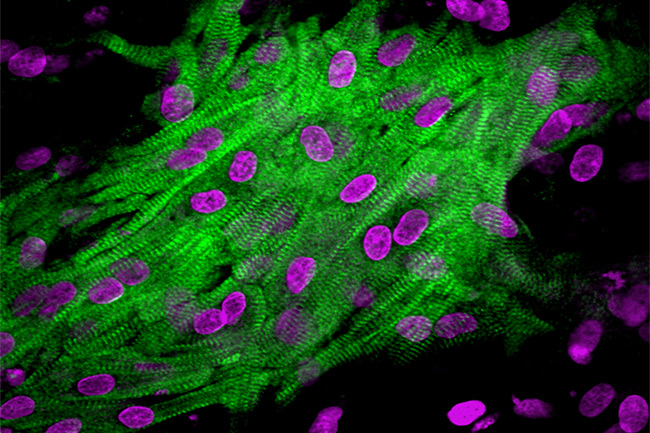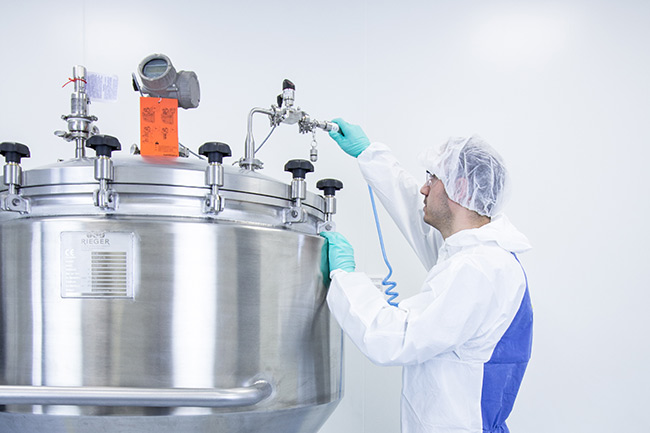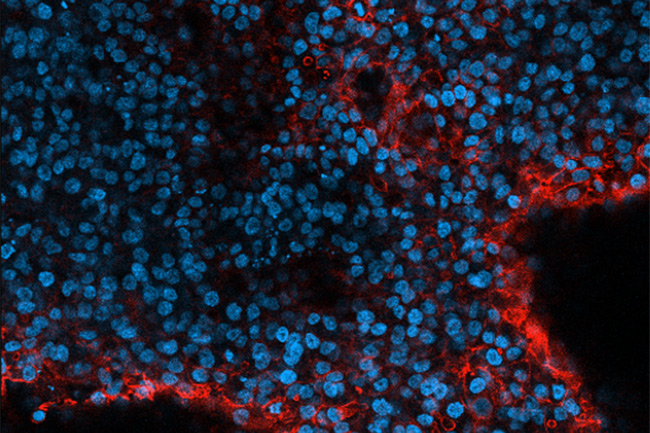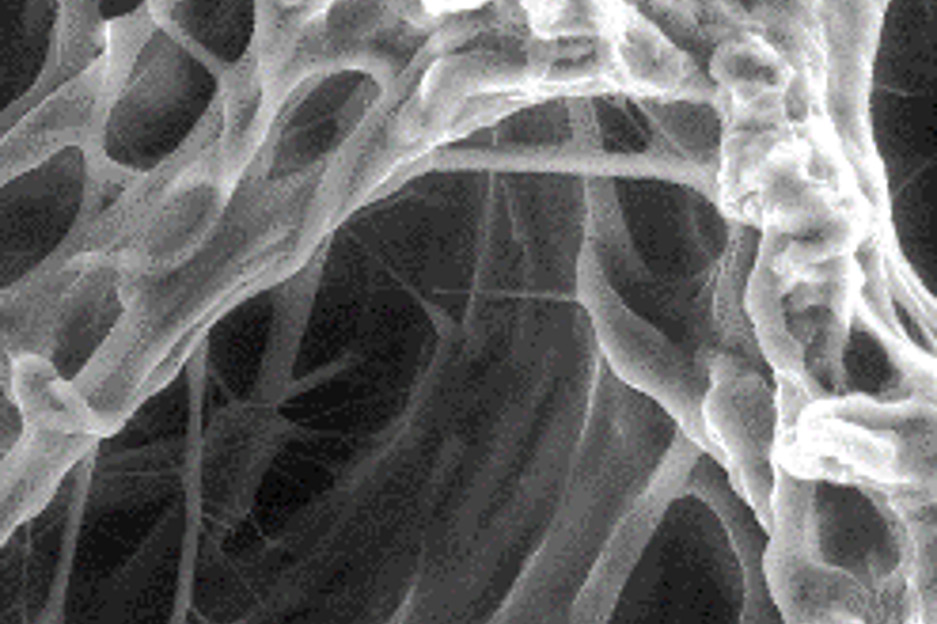CELL & TISSUE CULTURE
COLLAGEN AS UNIVERSAL MATRIX IN CELL & TISSUE CULTURE
Due to its central role as an extracellular matrix protein in cell adhesion and organ formation, collagen is an ideal substrate for cell culture and tissue engineering. Using an advanced technology for collagen purification and processing, our unique fibrous collagen retains the in vivo-like structure of insoluble collagen fibers with excellent proven biocompatibility and biodegradability.
All our collagen products provide natural signals for better attachment, growth, and differentiation, thereby supporting authentic cell performance and complex tissue formation. They are suited for a wide range of biomedical research and development applications that based on cell & tissue cultures
Collagen type I is a major structural component of the extracellular matrix
where it forms a fibrillar scaffold for cell adhesion and the formation of connective tissues.
Collagen scaffolds for 2D cultures

Stable & flexible membranes for optimal culture performance
Our permeable membranes such as the Collagen Cell Carrier® are universal scaffolds for the culture of adherent cells.
- Use for general cell biology research
- Wide range of applications in regenerative medicine
- Cells are seeded on top, non-porous membranes facilitate co-cultures
- Membrane-culture complex can be transferred for multi-purpose use
- Ultrathin & translucent collagen matrix enables immunofluorescent imaging of cultured cells
- Histological analysis can be performed using standard protocols
- Metabolic activity can be monitored using colorimetric methods
- Freezing & thawing doesn’t affect features

Standardized soluble collagen for vessel coating
Our Bovine Soluble Collagen is suitable as a thin coating of any cell culture flask or dish.
- Combine with other matrix components and growth factors
- Nature-like collagen matrix promotes cell attachment and authentic cell performance
- Metabolic activity can be monitored using colorimetric methods
Collagen scaffolds for 3D cultures

Collagen membranes as tissue carriers
The mechanical characteristics and the biocompatibility of our collagen membranes facilitate the establishment of co-cultures and the engineering of thin transferable tissue constructs.
- The Collagen Cell Carrier® can be used to generate 3D tissue models, e.g., skin, or organ-on-chip models, e.g., intestinal barrier.
- All membranes are widely applicable, including tissue engineering or regenerative medicine
- Validated, established products

Soluble collagen for flexible 3D hydrogels
Our Bovine Soluble Collagen can be used to generate hydrogels with different stiffness for 3D cultures.
- The gels represent an extracellular matrix analogue that enables spatial interactions of cells
- Ideal for studies on growth, proliferation and differentiation of various cell types
- Use for cell migration studies, e.g. in metastasis, wound healing or development
- Combine with other matrix components and growth factors

Collagen sponges to study spatial interactions
Our Collagen Sponges with their laminar porous structure provide a robust yet flexible scaffold for realistic spatial cell-cell interactions.
- Optimal growth conditions for complex 3D cultures
- Seeded cells spread inside the sponge within a few days
- Easy nutrient & factor exchange
- Monitor growth and differentiation by standard IF microscopy
- Broad range of applications in tissue development studies or tissue engineering

Collagen hydrogels to mimic body tissues
Our ready-to-use Collagen Hydrogels are ideal for the establishment of tissue culture models.
- The fiber network mimics the natural consistency of real body tissue
- Select stiffness grade according to desired body tissue firmness
- Authentic performance of cell lines & primary cells that infiltrate the hydrogel, generate 3D layers and express tissue markers
The following primary cells have been tested on our collagen membranes:

Heart & vascular system
Heart & vascular system
- Neonatal cardiac fibroblasts
- Embryonic cardiomyocytes
- Neonatal cardiomyocytes
- Cardiomyocytes
- Embr. ventricular myocytes
- Card. microvasc. endot. cells

Eyes
Eyes
- Cornea endothelial cells
- Cornea epithelial cells
- Iris pigment epithelial cells
- Retinal pigment epithelial cells

Bone & Cartilage
Bone & Cartilage
- Osteoblast from adipose MSCs
- Chondrocytes
- Chondrocytes from adipose MSCs
- Meniscus cells

Nervous system
Nervous system
- Astrocytes
- Fetal dopamine neuronal cells
- Fetal neocortical neuronal cells
- Dorsal root ganglion neur. cells
- Enteric neuronal cells

Liver & Pancreas
Liver & Pancreas
- Hepatocytes
- Pancreatic cells

Skin
Skin
- Keratinocytes
- Epidermal keratinocytes (hEKs)
- Melanocytes from hair follicle

Urogenital tract
Urogenital tract
- Urothelial cells

Stem cells
Stem cells
- Nucleus pulposus (NP) cells
- Dental pulp pluripotent-like stem cells (DPPSC)
- Mesenchymal stem cells (different tissues)
Downloads
- Case Study: CCC in intestine-on-chip model
- User Guide: membrane cell staining
- User Guide: membrane enzymatic cell detachment
- User Guide: Collagen Cell Carrier®, attachment & detachment
- User Guide: Bovine Soluble Collagen coating
- User Guide: Bovine Soluble Collagen, gels for cell seeding
- Product info: Primary cells on Collagen Cell Carrier®


